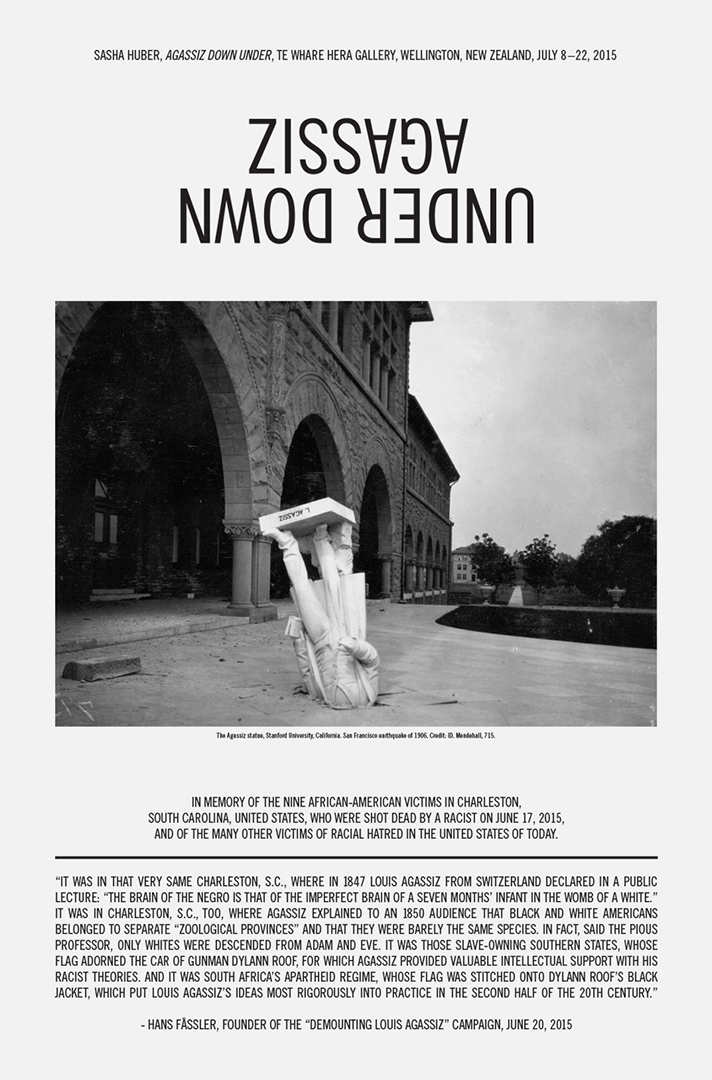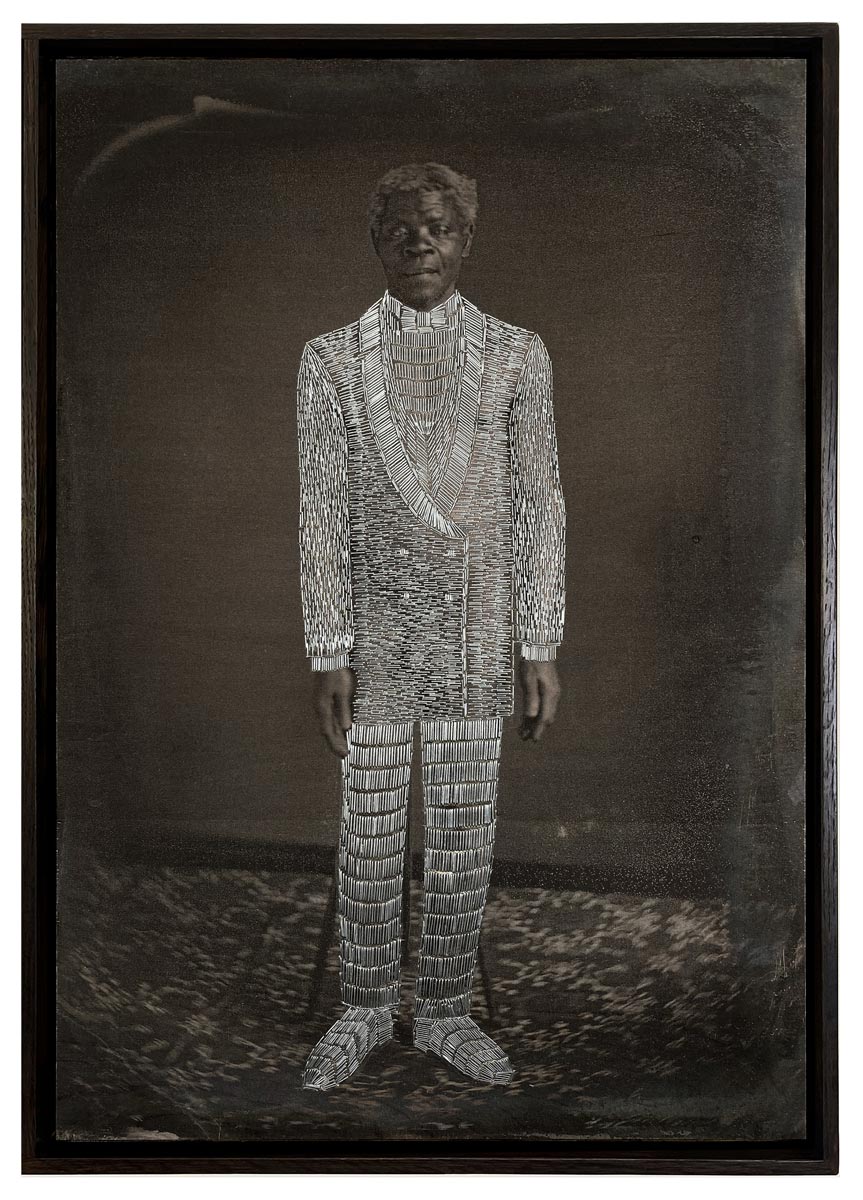Our current exhibition explores how colonial histories are imprinted into the landscape through naming and acts of remembrance - asking what actions it might take to repair the inherited traumas of history. The free exhibition, YOU NAME IT by Sasha Huber, is on display at Autograph until 25 March 2023.
Here we answer five quick questions that are key to the show.

Sasha Huber is a Helsinki-based contemporary artist and researcher of Swiss-Haitian heritage. Through her work, Sasha stages what she calls ‘reparative interventions’ or ‘interruptions’ which challenge racist histories and archives.
She says: “Doing art has helped me, personally, to make sense of the world we live in, and it has also helped me make sense of who I am as a person, where I come from, and who came before me. So in that sense, for me, making art is really about gaining some sort of understanding of the world.”¹
YOU NAME IT brings together works produced over a decade of Sasha’s creative career and includes works in video, photography, performance, installations and staple portraiture. This technique of creating portraits using an air-pressured staple gun has become a signature technique for Sasha. These stapled works, which she has referred to as ‘pain-things’, enable Sasha to speak about unequal power dynamics and metaphorically ‘shoot back’ against oppression.
You can watch a time lapse of Sasha at work, producing a portrait of Tilo Frey that was commissioned by Autograph, and forms a part of her series titled The Firsts:
Much of Sasha’s works asks us to consider the questions: ‘who and what do we memorialise?’ and ‘how do we or should we memorialise them?’ A classic way in which prominent figures from history become memorialised is through the naming of buildings, streets and even entire countries after them. One such individual memorialised in this manner is the Swiss-born glaciologist and proponent of scientific racism Louis Agassiz (1807–1873). His scientific contributions to the fields of glaciology, palaeontology and geology resulted in over 80 landmarks bearing his name on Earth, the Moon, and Mars.
As a member of the transatlantic De-mounting Louis Agassiz committee, Sasha made an intervention that sought to remove Agassiz’s name from the so-called ‘Agassizhorn’ peak in the Alpine mountains and instead replace it with ‘Rentyhorn’, in honour of Renty Taylor.
Renty Taylor was an enslaved man and one of the non-consensual subjects of some of the oldest known slave photos, which were taken by Joseph T. Zealy under the supervision of Agassiz in 1850 with the intention of promoting white supremacist ideology. Through this act of renaming, Sasha draws on the traditions of ‘people’s history’, or ‘history from below’ to reframe histories and celebrate those stories that might otherwise be forgotten or erased. Here, Sasha invites us to celebrate and commemorate the life and work of Renty Taylor who was subject to Agassiz’s scientific racism, rather than Agassiz himself.
Who would you celebrate or commemorate? You can join the conversation through our call for photos on the theme ‘Becoming Monumental’.

De-mounting refers to the removal or dismantling of an object or an idea. In 2015, while completing an artist residency in earthquake-prone Aotearoa (the ancestral Māori name for New Zealand), Sasha learned that the 1906 San Francisco earthquake had toppled a statue of Louis Agassiz at Stanford University. She created Agassiz Down Under (2015), a three-poster series using photographs of the upturned sculpture with its head lodged in the ground, both to commemorate recent victims of police brutality and anti-Black violence, and to advocate for the physical removal of monuments representing upside-down ideologies.
The question of de-mounting and memorialising historical figures has frequently been the subject of public debate, and has recently received a lot of attention during the resurgence of activity around the Black Lives Matter movement, which saw numerous attempts by people from across the globe to de-mount statues and other symbols of racist and colonial histories.

Sasha’s artworks memorialise and honour a number of different individuals from history, including more well-known figures such as Frederick Douglass, the national leader of the American abolitionist movement, to lesser-known individuals whose stories deserve to be memorialised, such as Tilo Frey, the first woman of colour elected to the Swiss National Council.
You can find out more about the individual stories of some of the people honoured in the exhibition in our blog post Who Was Renty Taylor? Honouring and Recalling 7 Stories of Black Liberation Struggles.
11 Nov 2022 - 25 Mar 2023
Free exhibition at Autograph's gallery in London
Banner image: Sasha Huber: YOU NAME IT exhibition at Autograph. 11 November 2022 - 25 March 2023. Curated by Renée Mussai, Mark Sealy and Bindi Vora. Photograph by Kate Elliot.
Images on page: 1) Courtesy Sasha Huber. 2) Sasha Huber, The Firsts - Tilo Frey, 2021. Video, 4"45' Music by Brandy Butler, ‘Before The Tide’ © the artist. Courtesy of / commissioned by Autograph, 2021. Supported by Art Fund. 3) Sasha Huber, film still from Rentyhorn [detail], 2008. 4'30" min. Courtesy the artist. 4) Sasha Huber, Agassiz Down Under, 2015. Courtesy the artist. 5) Sasha Huber, Tailoring Freedom – Jem, 2022. Metal staples and photograph on wood, 49 × 69 cm. Original images courtesy the Peabody Museum of Archaeology and Ethnology, Harvard University (35-5-10/53046). © the artist. Courtesy of / commissioned by The Power Plant Contemporary Art Gallery, Toronto; Autograph, London; Turku Art Museum, Finland; and Kunstinstituut Melly, Rotterdam. 6) Sasha Huber, Agassiz Down Under [detail], 2015. Courtesy the artist.
Related content: 1) Sasha Huber, film still from The Firsts - Tilo Frey, 2021. Video, 4"45'. Music by Brandy Butler, ‘Before The Tide’. © the artist. Courtesy of / commissioned by Autograph, 2021. Supported by Art Fund. 2) Sasha Huber, Agassiz Down Under [detail], 2015. Courtesy the artist. 3) Sasha Huber, Tailoring Freedom – Renty and Delia [detail], 2021. Courtesy Tamara Lanier and the artist. Commissioned by The Power Plant Contemporary Art Gallery, Toronto; Autograph, London; Turku Art Museum, Finland; and Kunstinstituut Melly, Rotterdam. Original photographs: Renty 35-5-10/53037; Delia 35-5-10/53040, courtesy of the Peabody Museum of Archaeology and Ethnology, Harvard University.
Autograph is a space to see things differently. Since 1988, we have championed photography that explores issues of race, identity, representation, human rights and social justice, sharing how photographs reflect lived experiences and shape our understanding of ourselves and others.